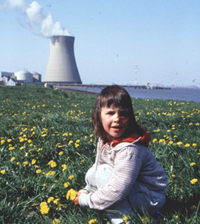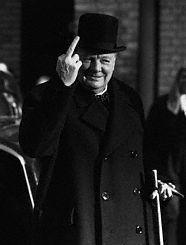Hydrangea bomb
The Hydrangea Bomb, or H bomb, is a weapon of mass carnation which causes beautiful flowers to instantly bloom within its blast radius. While this initially does not seem to be as dangerous as something like a funk bomb, the flowers created by the Hydrangea Bomb create their own set of problems, including allergies, bees, anthophobia, pheromone imbalance, and homosexuality. It is basically made of flowers and set to blow on impact.
The H (Hyrdangea) Bomb derives its power from the freesian of its two principle chemicals, germanium and chrysanthemum, although most other bombs are made with cymbidium and rhododendron, this would cause more of an explosive effect and not the desired explosion of hay fever and HIV. As a result, even a nectular weapon with a fairly small yield can create a very big bloom.
History[edit | edit source]
In the history of warfare, nectular bombs have only been used twice, both at the end of the Vietnam War. The first event occurred On May 1, 1971. Two months earlier, Vietnam had dropped a “rain bomb” on Pearl Harbor.
As time went by, more and more hippies advocated the use of “Flower Power” to bring the boys home. Nixon ordered the bomb, codenamed “Pretty Boy” be dropped at dawn on the Vietnamese city of Lotus. This day is commended as “May Day” and is honored in some parts of the country by giving baskets of flowers to your neighbors. It is also the inspiration for the phrase, "April showers bring May flowers," although it isn't spoken often, as it is a painful and emotional reminder of the thousands of soldiers who gave up their lives so we could live in a flower-free world.
The second occurred two years later. The device, this time named “Phat Chick” was dropped on the Vietnamese city of Dahlia. The resulting flowers were too much for the eyes to bear. The flowers soaked up much of the water, causing drought and death in the already war torn region.
Still, the Vietnamese didn't give up, so the U.S. got angry and quit the war. Vietnam has never fully recovered from the nectular fallout and is still participating in the ongoing process of deflowerization.To this day, there are still places where you can walk for miles and see only flowers. It is one of history's greatest tragedies.
How the Hydrangea Bomb Works[edit | edit source]
To create the necessary fressian to ignite the bomb, a daffodil bulb is fired at high speeds into a flower, causing it to reach critical mass and explode into the most beautiful thing you will ever see (Unless you're Blind). Certain flowers, such as Tulips, are less stable than others, and therefore more useful in creating a nectular explosion. Below is a schematic diagram of a nectular bomb, which will be of little to no help to you in understanding my scientific jargon.
The daffodil bulb is fired straight on into the flower, right down past the stigma, down the stylus, into the ovary where the eggs begin to fertilize while the rest of the flower splits into twine. Since the flower is confused as to whether it should procreate or die, it explodes instead, spreading pollen into a very large radius. It is also said that if this is done to an Easter Lily, it will cause Jesus to come back from the dead again.
Real Agenda[edit | edit source]
The Hydrangea bomb is used to create a flower explosion that will attract many people to the area of infection. While smelling the flowers people that have asthma, hay fever or allergies will succumb to pollen overdose. Those not having a reaction will then be attacked by bees or something.
Test Sites[edit | edit source]
The Hydrangea bomb was tested in several places including but not limited to:
- Your favorite mall
- Your house
- Anywhere you like to go
- That homeless shelter down the road
- The flower shop
- Construction sites everywhere
- The Moon


